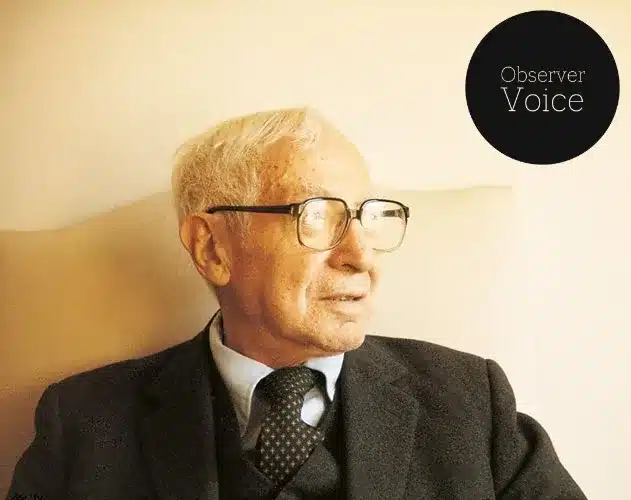Isidor Isaac Rabi (29 July 1898 – 11 January 1988), was an American physicist, best known for inventing the atomic and molecular beam magnetic resonance method of observing atomic spectra (in 1937).
In 1934, he was awarded the Noble Prize in Physics.
Life and Career
He was born on 29 July 1898, in Galicia, Austria-Hungary. He finished elementary school in Brooklyn, and then he went to a manual training high school in Brooklyn.
He got a scholarship and was admitted to Cornell University in Ithaca, New York. He began studying electrical engineering, then switched to chemistry. In 1919, he graduated from university with a BS in chemistry.
He had to study chemistry again at the University of Cornell from 1922-1923 after wasting three years since he was not able to get a fellowship to study physics.
After leaving Cornell, he wanted to move to Harvard University but instead joined Columbia University as a graduate student in physics.
In 1927, he was awarded his Ph.D. after submitting his dissertation on 16 July 1926.
Between 1927 and 1929, he worked with Erwin Schrodinger, Arnold Sommerfield, Wolfgang Pauli, and Niels Bohr in Europe. In Hamburg, Germany, he used the ‘Rabi Field’ to deflect beam particles, while working with Pauli in Otto Stern’s molecular-beam lab.
In 1929, Rabi was offered a job at Columbia University while working in Leipzig with Werner Heisenburg.
His career started as a lecturer in ‘Theoretical Physics’ from 1929 to 1937.
He also taught ‘Theoretical Physics’ at Columbia University from 1937 to 1940.
From October 1940 to 1945, he headed the Radiation Laboratory Research Division at the Massachusetts Institute of Technology.
From 1945 to 1957, he was a physics professor at Columbia University.
In 1950, he became president of the ‘American Physical Society’.
In New York, he founded Brookhaven National Laboratory, and in Geneva, Switzerland, he also developed CERN.
He also built Columbia University’s physics department up to be one of the best in the world, producing several Nobel Prize winners.
Isidor Isaac Rabi died on 11 January 1988 in New York City, U.S.
Major Experiments
Using a molecular beam apparatus, Rabi and his first graduate student W. Cohen, measured sodium’s nuclear spin in 1933. During the second experiment in 1936, he was able to reduce the uncertainty in the magnetic moments of protons and deuterons drastically. By 1939, he had reduced the uncertainty to less than 0.7 percent in his third experiment, which is incredibly accurate.
He developed (in the 1930s) a method to measure the magnetic properties of atoms, atomic nuclei, and molecules. His method became the basis for nearly all molecular and atomic beam experiments.
He discovered the nuclear quadrupole moment and the magnetic resonance method for measuring atom magnetic instances in 1939.
Awards
He won the Nobel Prize for Physics in 1944.
He was awarded the ‘Niels Bohr Gold Medal’ and the ‘Atoms for Peace Award’ in 1967.
He also received the ‘Oersted Medal’ in 1982 and the ‘Vannevar Bush Award’ in 1986.

